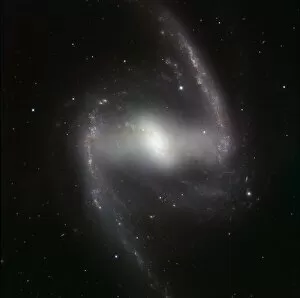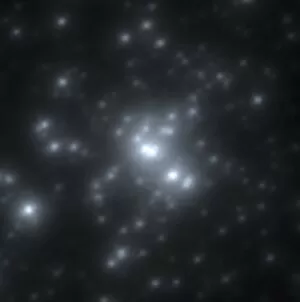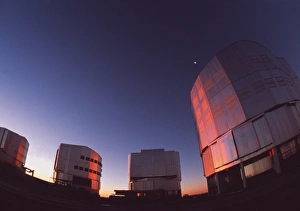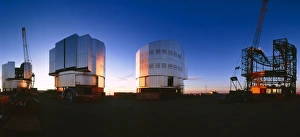Very Large Telescope Collection
The Very Large Telescope (VLT), located in the Antofagasta Region of Chile's Atacama Desert
All Professionally Made to Order for Quick Shipping
The Very Large Telescope (VLT), located in the Antofagasta Region of Chile's Atacama Desert, is a remarkable observatory operated by the European Southern Observatory (ESO). With its state-of-the-art technology and prime location, it offers astronomers an unparalleled view into the depths of our universe. One captivating image captured by the VLT is that of the spiral galaxy NGC 3627. This composite image, labeled C016 / 9728, showcases the intricate beauty and structure of this celestial wonder. Another stunning sight is NGC 6872, another spiral galaxy depicted in composite image C016 / 9730. Its elongated arms stretch across space, mesmerizing viewers with their sheer magnitude. Delving closer to home, infrared image C014 / 5035 reveals a breathtaking glimpse into the center of our Milky Way galaxy. The swirling clouds of gas and dust create a mesmerizing tapestry that hints at countless mysteries waiting to be unraveled. Moving further outwards again, HAWK-I image C014 / 5034 presents us with NGC 1365 - yet another awe-inspiring spiral galaxy. Its vibrant colors and graceful spirals evoke a sense of cosmic harmony amidst vastness. Venturing beyond galaxies altogether, infrared image C014 / 5038 captures RMC 136a star cluster in all its glory. The intense concentration of stars creates a dazzling display that leaves observers spellbound. But not everything seen through VLT's lenses are real; artwork C014/5045 depicts the T Cha system and its surrounding dust ring. This imaginative representation allows scientists to study these distant phenomena more closely than ever before. Even as we marvel at these extraordinary images taken by VLT telescopes over time—each one offering unique insights into our universe—it's important to remember that this groundbreaking facility itself was once just an idea being transformed into reality atop Cerro Paranal.









